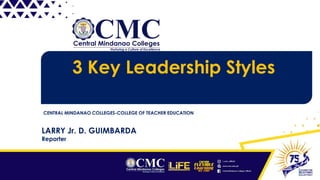EDUC107(Reporting)-Chapt.2-3KeyLeadershipStyles.pptx
ReportingdsdsssssssssssssssssssssssssssssssssssssssssssssssssssssssssssssssssssssssReportingdsdssssssssssssssssssssssssssssssssssssssssssssssssssssssssssssssssssssssssssssssssssssssssssssssssssssssssssssssssssssssssssssssssssssssssssssssssssssssssssssssssssssssssssssssssssssssssssssssssssssssssssssssssssssssssssssssssssssssssssssssssssssssssssssssssssssssssssssssssssssssssssssssssssssssssssssssReportingdsdssssssssssssssssssssssssssssssssssssssssssssssssssssssssssssssssssssssssssssssssssssssssssssssssssssssssssssssssssssssssssssssssssssssssssssssssssssssssssssssssssssssssssssssssssssssssssssssssssssssssssssssssssssssssssssssssssssssssssssssssssssssssssssssssssssssssssssssssssssssssssssssssssssssssssssssssReportingdsdssssssssssssssssssssssssssssssssssssssssssssssssssssssssssssssssssssssssssssssssssssssssssssssssssssssssssssssssssssssssssssssssssssssssssssssssssssssssssssssssssssssssssssssssssssssssssssssssssssssssssssssssssssssssssssssssssssssssssssssssssssssssssssssssssssssssssssssssssssssssssssssssssssssssssssssssssssssssssssssssssssssssssssssssssssReportingdsdsssssssssssssssssssssssssssssssssssssssssssssssssssssssssssssssssssssssssssssssssssssssssssssssssssssssssssssssssssssssssssssssssssssssssssssssssssssssssssssssssssssssssssssssssssssssssssssssssssssssssssssssssssssssssssssssssssssssssssssssssssssssssssssssssssssssssssssssssssssssssssssssssssssssssssssssssssssssssssssssssssssssssssssssssssssssssssssssssssssssssssReportingdsdsssssssssssssssssssssssssssssssssssssssssssssssssssssssssssssssssssssssssssssssssssssssssssssssssssssssssssssssssssssssssssssssssssssssssssssssssssssssssssssssssssssssssssssssssssssssssssssssssssssssssssssssssssssssssssssssssssssssssssssssssssssssssssssssssssssssssssssssssssssssssssssssssssssssssssssssssssssReportingdsdsssssssssssssssssssssssssssssssssssssssssssssssssssssssssssssssssssssssssssssssssssssssssssssssssssssssssssssssssssssssssssssssssssssssssssssssssssssssssssssssssssssssssssssssssssssssssssssssssssssssssssssssssssssssssssssssssssssssssssssssssssssssssssssssssssssssssssssssssssssssssssssssssssssssssssssssssssssssssssssssssssssssssssssssssssssssssssssssssssssssssssssssssssssssssssssssssssssssssssssssssssssssssssssssssssssssssssssssssssssssssssssssssssssssssssssssssssssssssssssssssssssssssssssssssssssssssssssssssssssssssssssssssssssssssssssssssssssssssssssssssssssssssssssssssssssssssssssssssssssssssssssssssssssssssssssssssssssssssssssssssssssssssssssssssssssssssssssssssssssssssssssssssssssssssssssssssssssssssssssssssssssssssssssssssssssssssssssssssssssssssssssssssssssssssssssssssssssssssssssssssssssssssssssssssssssssssssssssssssssssssssssssssssssssssssssssssssssssssssssssssssssssssssssssssssssssssssssssssssssssssssssssssssssssssssssssssssssssssssssssssssssssssssssssssssssssssssssssssssssssssssssssssssssssssssssssssssssssssssssssssssssssssssssssssssssssssssssssssssssssssssssssssssssssssssssssssssssssssssssssssssssssssssssssssssssssssssssssssssssssssssssssssssssssssssssssssssssssssssssssssssssssssssssssssssssssssss

Recommended
Recommended
More Related Content
Similar to EDUC107(Reporting)-Chapt.2-3KeyLeadershipStyles.pptx
Similar to EDUC107(Reporting)-Chapt.2-3KeyLeadershipStyles.pptx (20)
Recently uploaded
Recently uploaded (20)
EDUC107(Reporting)-Chapt.2-3KeyLeadershipStyles.pptx
- 1. 3 Key Leadership Styles CENTRAL MINDANAO COLLEGES-COLLEGE OF TEACHER EDUCATION LARRY Jr. D. GUIMBARDA Reporter
- 3. UNDERSTANDING LEADERSHIP STYLES • A leadership style is a leader’s characteristic way of behaving in most situations. • The leadership continuum, or classical approach to understanding leaders, classifies leaders according to how much authority they retain for themselves versus how much is turned over to the group. Three points on the continuum are autocratic, participative, and free-rein leaders.
- 5. I. AUTOCRATIC LEADERSHIP • Autocratic Leader attempts to retain most of the authority, make major decisions without seeking group input. • They expect compliance without question, minimal considerations of subordinates’ opinions, and often perceived as rigid and demanding. • Although authoritarian style of leadership is not in vogue, many successful leaders are autocratic.
- 6. II. PARTICIPATIVE LEADERSHIP • A participative leader is one who shares decision-making authority with the group. • They value group input and can be both people-oriented and tough-minded. • 3 sub-types: Consultative, Consensual, and Democratic leaders.
- 7. PARTICIPATIVE LEADERSHIP SUBTYPE 1. Consultative leaders - A consultative leader solicits opinion from the group but leaders of this type make it clear that they alone have the authority to make the final decisions. - Consultative leaders typically hold group meetings to discuss issues before making decisions.
- 8. PARTICIPATIVE LEADERSHIP SUBTYPE 2. Consensual Leaders - Consensual leaders encourage group discussion and base decision on group consensus, thus turning over more authority to the group than do consultative leaders - This style can lead to longer decision-making processes as all parties need to agree.
- 9. PARTICIPATIVE LEADERSHIP SUBTYPE 3. Democratic Leaders - A democratic leader confers final authority on the group, often using voting before making decision. - Democratic leaders turn over so much authority to the group that they are sometimes called “free-rein leaders.”
- 10. III. FREE-REIN LEADERSHIP • also referred to as “laizzes-faire” (allow them to do) • A free-rein leader is one who turns over virtually all authority to the group. • They issue general goals and guidelines to the group and then do not get involved again unless requested. • Can frustrate subordinates, and can be seen as week or ineffective. (The Subordinate-Centered Style)
- 11. TRANSFORMATIONAL AND CHARISMATIC LEADERSHIP • Transformational leaders drive positive changes, and its combine with charisma, inspiration and intellectual stimulation. • Contrasted with transactional leaders who focus on transactions for compliance (e.g. trade money, jobs and security for compliance). • Turn around failing situations, elevate performance to higher levels.
- 12. HOW TRANSFORMATION TAKES PLACE? Transformation takes place in one or three ways: 1. Raising awareness: Emphasize rewards’ importance and value. 2. Beyond Self-Interest: Focus on group and organizational success. 3. Self-Fulfillment: Move beyond minor satisfaction, encouraging personal growth and higher needs.
- 13. THE LINK BETWEEN CHARISMA & TRANSFORMATIONAL LEADERSHIP • Transformational leaders have charisma, the ability to lead others based on personal charm, magnetism, inspiration, and emotion. • Charisma is the basis of referent power.
- 14. SIGNIFICANT QUALITIES AND ACTIONS OF CHARISMATIC LEADERS: 1. Vision- Offer an inspiring image of the organization’s ideal future, inspiring organization to perform well. 2. Masterful Communicator- They use colorful language and exciting metaphors and analogies.
- 15. SIGNIFICANT QUALITIES AND ACTIONS OF CHARISMATIC LEADERS: 3. Trust- Charismatic leaders inspires trust, even leading followers to risk their careers to pursue the chief’s vision. 4. Empowerment- They help team members feel capable and competent. 5. Energy & Action-oriented- Typically high-energy, serve as a model for getting things done on time.
- 16. Unethical Charismatic Leader Ethical Charismatic Leader • Uses personal power only for personal gain or impact • Uses power • Promotes own personal vision • Aligns vision with followers’ needs and aspirations • Censures critical or opposing views • Considers and learns from criticisms • Demands own decisions be accepted without question • Stimulates followers to think independently and to question the leader’s view • One-way communication • Open, two-way communication • Insensitive to followers’ needs • Coaches, develops, and supports followers; shares recognition with others • Relies on convenient external moral standards to satisfy self-interests • Relies on internal moral standards to satisfy organizational and societal interests Qualities and Practices of Ethical Versus Unethical Charismatic Leaders
- 17. SUPERLEADERSHIP: LEADING OTHERS TO LEAD THEMSELVES • Leaders aspire to become Superleaders by leading others to lead themselves. • Superleaders at as teachers and coaches rather than a director. • “Key focus: Cultivating Productive thinking” - Teaching team members productive thinking for self-control. - Leaders serve as models of constructive thought patterns.